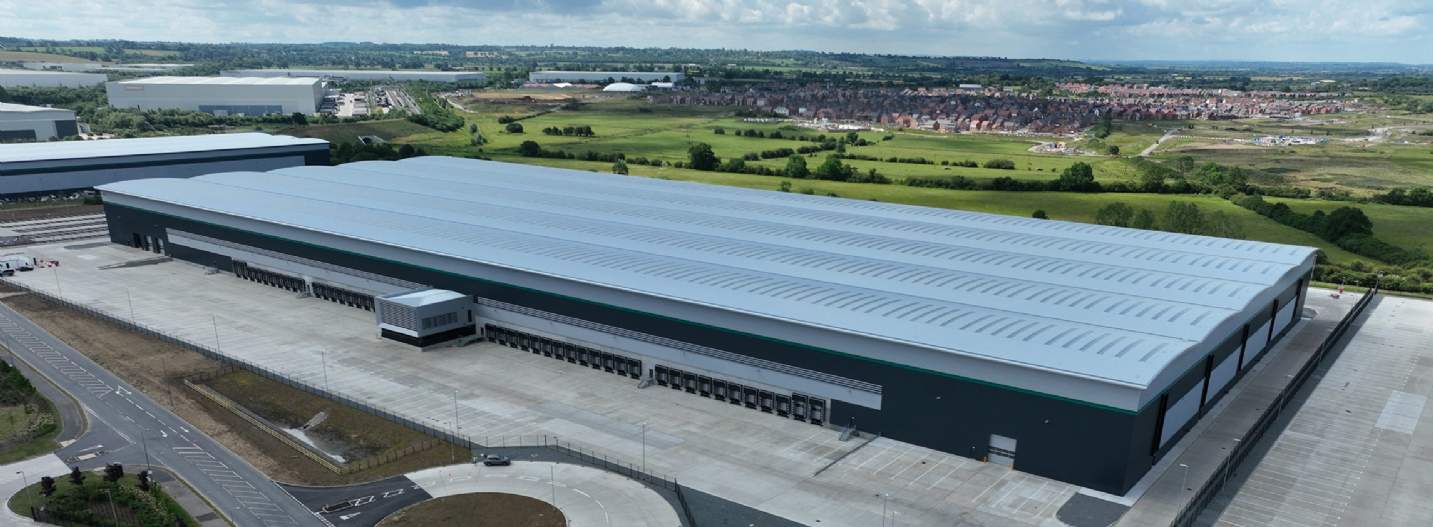Take-up falls 34% but remains 12% above the pre-Covid average
.jpg)
Panattoni Park Avonmouth, where Panattoni, advised by Savills, has delivered 1.3m sq ft speculatively
As we wave goodbye to 2023, many market participants will be looking forward to a better 2024 after what has been a challenging year for real estate in general. The highest interest rates for over 15 years and inflationary pressures have seen investment and occupier activity cool in the UK logistics market as the impact of monetary policy drivers start to filter through the wider economy. Occupiers are no longer primarily in growth mode and are more driven by strategic decision-making, governed by upcoming lease events and a desire to improve the ESG credentials of their real estate portfolios. This has meant that whilst there are a sizeable number of requirements in the market, decision-making is more protracted and the end result may be that an occupier decides to stay in their current premises and revisit their requirement when economic and financing conditions are more favourable.
Whilst economic forecasters are not suggesting base rate drops until the second half of the year, there are early indications that the consumer economy remains in reasonable health, with Next reporting better-than-expected performance in the months of November and December. Online sales remained the major contributor to the performance, adding 9.1%, while store retail made a more pedestrian contribution of an additional 0.6%. The same can also be said for the grocery sector where, according to Kantar, a record £13.7bn passed through the tills in the four weeks to 24 December, and one in five households made an online grocery order. Whilst one swallow doesn’t make a summer, these numbers should please everyone as occupiers look to return to growth mode as the economic picture improves.
Take-up
At a national level, take-up for 2023 has reached 29.1m sq ft across 130 transactions, a 40% fall year on year but 12% above the pre-Covid average, signalling a return to more normal market conditions after a record-breaking period.
Whilst deal counts have been 19% above the pre-Covid average, a key contributing factor to falling levels of take-up has been the more muted levels of demand for larger buildings, with take-up for units over 500,000 sq ft falling 61% to 7.32m sq ft.
The level of build to suit (BTS) transactions also fell to the lowest level since 2015 as volatility in capital markets made it significantly harder to agree terms on such transactions. Pleasingly, we continue to see diversification of the occupier mix, with manufacturing-related deals accounting for 29% of the market, the highest level since 2017.
Supply and Pipeline
The combination of 18m sq ft of speculative completions in 2023, of which 28% has already been let, and a notable rise in the level of occupier-controlled space on the market, has seen supply rise by 90% over the last 12 months, reflecting a vacancy rate of 7.15%. Whilst no region has been immune from rising supply, there remain many markets that still have less than one year of supply, particularly for units over 300,000 sq ft. The level of speculative completions has meant that the total Grade A supply has increased to 58% of the total, the highest level Savills has ever recorded.
Speculative development announcements have fallen by 34% when compared to 2022, meaning that the total development pipeline for the UK now stands at 12.63m sq ft due for delivery in 2024 and early 2025.
